S
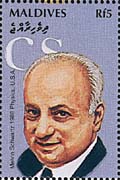
1965 Nobel Physics prize for fundamental work in quantum electrodynamics, with deep-ploughing consequences for the physics of elementary particles
Biography
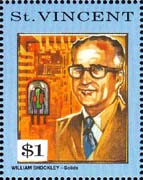
1956 Nobel Physics prize for research on semiconductors and their discovery of the transistor effect. Shockley developed the more practical junction transistor, which transformed the electronics industry. Shockley shared his Nobel Prize with Bardeen and Brattain. Subsequently Shockley argued his minority views on genetics, gaining considerable publicity. Believing that blacks are less intelligent than whites, and that the current population explosion is spreading 'bad' genes at the expense of 'good', Shockley enthusiastically supported such schemes as a sperm bank produced by Nobel prizewinners, restrictions on mixed marriages, and voluntary sterilization.

A 1979 series of Vatican stamps honors this Italian Jesuit astronomer. The three instruments perfected by Secchi are shown in the stamps: the meteorograph, the spectroscope and the telescope. Astronomers call him "the Father of Astrophysics. Angelo Secchi, S.J. was born in Reggio, Italy and died in Rome. He was a physicist and mathematician with remarkable ability and passion for astronomy. Angelo worked in stellar spectroscopy, made the first systematic spectroscopic survey of the heavens, pioneered in classifying stars by their four spectral types, studied sunspots, solar prominences, photographed solar corona during the eclipse in 1860, invented the heliospectroscope, star spectroscope, telespectroscope and meteorograph. He also studied double stars, weather forecasting and terrestrial magnetism. He became director of the Vatican Observatory at the age of 32 and dedicated himself energetically to the task. Sabino Maffeo S.J. tells the story of his tenure at the Vatican Observatory. (See Maffeo S.J. Sabino, In the Service of the Popes Translation by George V. Coyne, S.J. Pg. 13-15. Angelo Secchi was particularly attracted to astrophysics, a courageous choice in a time when this field was little developed. Nevertheless, he did not neglect other areas of astronomy. He also had regular teaching assignments in astronomy and physics at the Gregorian University, and had many other chores t keep him busy. He observed double stars, nebulae, planets and comets. He discovered three comets in the years 1852-1853. He studied terrestrial magnetism and meteorology; he was in charge of setting up a new triangulation base on the Via Appia; he went to various cities to repair or install new water systems; he established lighthouses in the ports of the Papal States; and he even had to look after the positioning of solar clocks. In addition to his great works on the sun, on the fixed stars, and on the unity of physical forces, he published about 730 small papers in various scientific journals. Angelo had a particular interest in the sun: its innumerable facets attracted his attention right up to the time of his death. He kept a daily record of the number of sunspots, and of their appearance and movement; at the eyepiece of his telescope, he drew pictures of the most interesting spots. Using a new technique for observing solar prominences outside of eclipse, Angelo found the connection between prominences and sunspots. His magnificent drawings of the huge red hydrogen jets extending from the solar surface in stupendous and ever changing shapes, have become classics of astronomical literature.
After that he pointed his spectroscope to the stars. Following the example of Fraunhofer and Respighi, he was the first to use a round prism in front of the lens of the Cauchoix refractor. In this way he observed more than 4,000 stars and came to a discovery whose importance not even he could understand. Although there were many differences among the spectra of the individual stars, he also found many similarities, and, using these as a criterion, he identified four classes of spectra. Because of this discovery Angelo is considered the father of the spectral classification of stars, a tool which has proven to be very powerful for research on the origins and structure of stellar systems. After a long and painful sickness Angelo Secchi died on 26 February 1878.
Physician, physicist, mathematician, designed a reactive water engine - the so-called Segner wheel
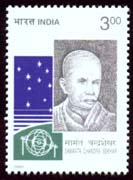
Samanta Chandra Sekhar was born on 13th December, 1835 corresponding to Pausha Krishna Astami of the Saka year 1957 in the royal family of the erstwhile princely state Khandpara in Orissa. It was then one of the twenty-six princely states called Gadajat ruled by a dynastic king, enjoying some degree of autonomy under the British rule. This kingdom, with an area of 244 square miles only, was founded in 1599 and was being ruled at the time of Samanta, by his nephew, the eleventh king named Natabar Singh Mardaraj. Samanta's father Shyamabandhu, and mother Bishnumali, were a very pious couple. They had nine daughters and one son before the birth of Chandra Sekhar. Since two daughters and the only son then had died in infancy, they had named Chandra Sekhar as Pathani Samanta also, who is popularly known in Orissa by that name.
From the very childhood, he showed extraordinary qualities. At the age of four, he spotted the planet Venus in the sky during the day. In those days, it was considered inauspicious to see a star in the sky during the day time. So his father had to perform elaborate Yagna before Lord Jagannath to get rid of the sin. He received primary education in Sanskrit from a Brahmin teacher. He studied Sanskrit Grammer, Smritis, Puranas, Darshan and the original texts of many Kavyas. When he was ten year old, one of his uncles taught him a little of astrology and showed him some of the stars in the sky. Thereafter, Samanta started teaching himself Lilabati, Bijaganita, Jyotisha and Vyakarana etc, and more importantly, the ancient astronomical works like Surya Siddhanta and Siddhanta Siromani from the family library.
At the age of fifteen, he began to check the predictions of the Siddhantas with his astronomical observations. He was utterly surprised to find that the predictions of the classics like Siddhanta Siromani and Surya Siddhanta did not agree with his observations. The stars and planets, neither appeared at the right place in the sky, nor at right time, as per the calculations. Disagreement between repeated calculations and observations, finally confirmed him that ancient Siddhantas have errors. This kind of conviction on the part of a boy at the tender age of fifteen against the time honoured age-old scientific treatises, is undoubtedly rare indeed.Young Chandra Sekhar resolved to rectify all those errors accumulated in Indian astronomy over thousands of years. The major hurdles on his way were, getting the right instruments for observation. Ancient Indian works did not give details of instruments or methods of measurements explicitly, except some hints here and there. He devised his own instruments for the measurement of time, height of distant objects, latitude and longitude of heavenly bodies etc. His passion for precision and accuracy was unbelievable.
He constructed as many as ten types of instruments for measuring time. His most well known instrument is Mana Yantra which is very simple, yet very versatile. Commencing from the age of fifteen, Samanta went on making observations and devising formulae for astronomical calculation for eight years. At the age of twenty-three, he started systematically recording his observations. Three years later, he started writing his results in the form of Sanskrit shlokas and made a treatise called Siddhanta Darpana, which was completed in 1869 when he was thirty-four. Working in a remote corner of Orissa, far from Cuttack the only town with some semblance of modern education then, he had no option but to keep the manuscript written on palm leaves in Oriya script for thirty years, lying in a corner of his house.
Prof. Mahesh Chandra Nyayaratna, Principal of Sanskrit College Calcutta, was in charge of Sanskrit education of Bengal presidency, which comprised then, the present Bengal, Bihar and Orissa provinces. In one of his official tour, he providentially met Samanta and was greatly impressed with his erudition and scholarship, and probably he introduced him to Prof. Jogesh Chandra Ray of Cuttack College, presently called Ravenshaw College. Later, it was the recommendation of Prof. Nyayaratna which brought him the title of Mahamahopadhyaya conferred by the British government in 1893.
Prof. Jogesh Chandra Ray played a key role in the publication of Siddhanta Darpana in Devanagiri script from a Calcutta press in 1899 with the financial support from the kings of Athmalik and Mayurbhanja. It must be noted that the scholarly introduction of fifty six pages in English therein by Prof. Ray, formed the window through which the outside world could get a glimpse of the valuable treasure contained in this monumental work in Sanskrit verses, which was hardly accessible.
Samanta Chandra Sekhar, although belonged to a royal family, had to face a lot of hardships to maintain his large family consisting of six daughters, five sons and a large number of hereditary servants. He had a fiefdom of two villages and a small amount of land out of which he had annual income of Rs.500 and 1000 maund of paddy. Six months before his death, the government granted him an allowance of Rs.50 per month. The king Natabar Singh was extremely envious of him for his popularity and put all kinds of hurdles on his way.
He was a very religious person. A large part of his daily life was devoted to prayer, worship and meditation. He breathed his last at Puri on Jyesth Krishna Dwadashi, the 11th June, 1904.
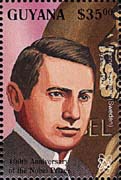
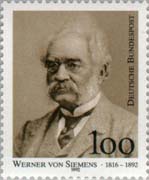
English astronomer - Christmas Isl. 85
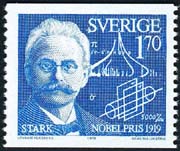
1919 Nobel Physics prize for his discovery of the Doppler effect in canal rays and the splitting of spectral lines in electric fields. Johannes Stark was able to demonstrate the splitting of atomic spectral lines due to an electric field, just as Zeeman had done with a magnetic field. However, the patterns are not symmetrical about the original line, as in the Zeeman effect, nor are the relationships between field strength and change in wave length quite as simple, making the Stark effect not a useful tool for spectral analysis.
Born: 24 March 1835 in St Peter (near Klagenfurt), Austria
Died: 7 Jan 1893 in Vienna, Austria
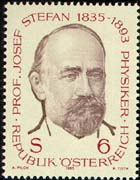
Biography
21.7.1880 - 4.5.1919
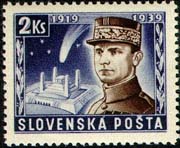
He was a Slovak astronomer. Stefanik studied at university in Prague, then in Zurich where he got a universal astronomical knowledge. In Slovakia he could not find a job so he went to France. Later he became a director of observatory on the highest mountain in Europe - Mont Blanc. French astronomical company awarded him Janssen medal.
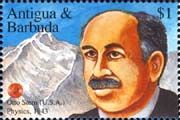
A Chinese astronomer and Buddhist monk of the Tang dynasty, Zhang Sui (683-727), was the first to describe proper stellar motion, or the apparent motion of stars across the plane of the sky relative to more distant stars. In Western astronomy, Edmond Halley is credited with this discovery in 1718 for some stars from Ptolemy's catalogue.

1904 Nobel Physics prize for his investigations of the densities of the most important gases and for his discovery of argon in connection with these studies. English author, physicist, mathematician, and educator. Born November 12, 1842 in Lanford Grove, England, he discovered argon.. He died June 30, 1919 in Witham, England – Stamps Grenada Grenadines GRG1995J18.17; Sweden 673; 675
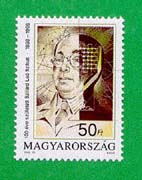
February 1898- Leo Szilard, a father of the Atomic Age, is born in Budapest, the son of an engineer. Szilard was a physicist in Germany until the Nazis took power, after which he went to Vienna, then England, and finally to the United States. At Columbia University he was part of the group that urged Franklin Roosevelt in a famous 1939 letter to build an atomic bomb. At the University of Chicago he collaborated with Enrico Fermi to build the first-ever nuclear reactor. He was also a key scientist in the Manhattan Project that built the first atomic weapons. After World War II Szilard devoted himself to curbing nuclear weapons and using nuclear power peacefully.
On February 11, 1998, the 100th anniversary of his birth, Hungary issued a postage stamp honoring Leo Szilard. The stamp combines a free interpretation of Szilard's face with designs representing his contributions to nuclear energy and information theory. Szilárd clarified the connection between the role played by reason in producing information and the second main tenet of energetics, one of the points of departure to informatics and brain research, in an essay called Reducing entropy in thermodynamic systems upon the impact of intelligent creatures (1926). He discovered the possibility of nuclear chain reactions and proved the case for neutron multiplication for uranium fission. Enrico Fermi and Szilárd were in charge of planning and putting into practice the first atomic pile. The names of both scientists are featured an the patent of the nuclear reactor. 'I believe that a single man is capable of changing the course of history. I dedicate this book to the memory of a man who never yearned for power, nor did he attain it, but who started the atomic age,’ writes Teller in a book dedicated to the memory of Leo Szilárd. (Better the Shield than the Sword)











